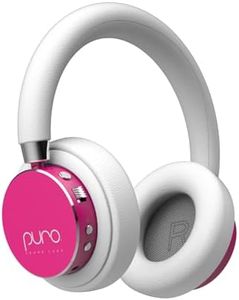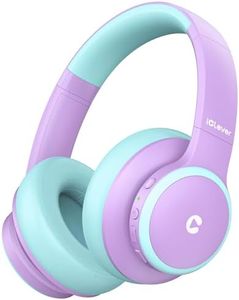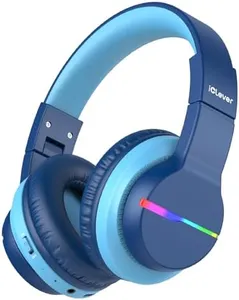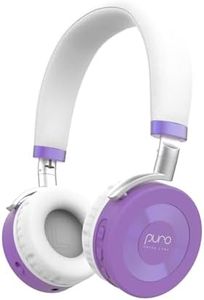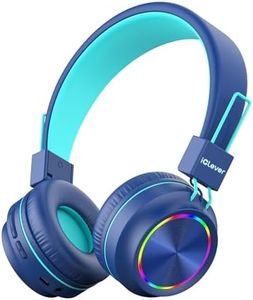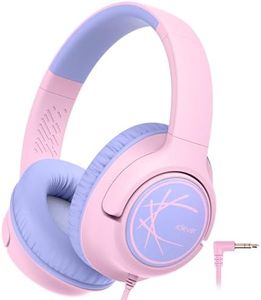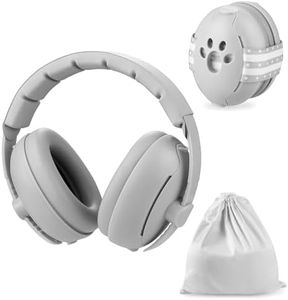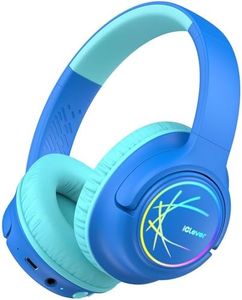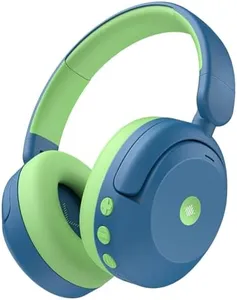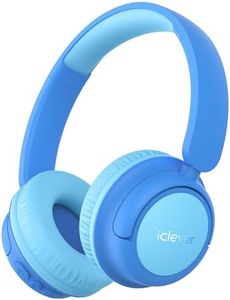We Use CookiesWe use cookies to enhance the security, performance,
functionality and for analytical and promotional activities. By continuing to browse this site you
are agreeing to our privacy policy
10 Best Toddler Headphones
From leading brands and best sellers available on the web.Buying Guide for the Best Toddler Headphones
Choosing headphones for a toddler is an important decision that goes beyond just comfort and appearance. Since you’re shopping for a young child, their safety, hearing protection, and ease of use should all be top priorities. It’s also good to consider how the headphones will handle daily use by an active toddler, as well as how comfortable they are for small, sensitive ears. Start by thinking about when and why your child will use the headphones – whether it’s for travel, learning, or quiet time at home. Good toddler headphones strike a balance between comfort, safety, and practicality.Volume LimitingVolume limiting is a key feature for toddler headphones, designed to protect young ears from loud sounds that could cause hearing damage. This feature ensures that the headphones cannot exceed a certain sound level, typically capped at 85 decibels (dB). Some models offer adjustable limits (such as 75, 85, or 94 dB), while others have a fixed cap. If your child will use headphones mostly in quiet settings, a 75 dB cap is safest, whereas 85 dB is suitable for some noisy environments like airplanes. Always choose headphones with a strict volume limiter; this is especially important for toddlers who cannot judge volume themselves.
Fit and ComfortFit and comfort refer to how well the headphones sit on your toddler’s head and ears, and how comfortable they are during use. Look for adjustable headbands, cushioned ear pads, and lightweight designs. Some headphones are specifically sized for toddlers, making them less likely to slip off or pinch. If your toddler will wear the headphones for longer durations, soft padding and a comfortable fit are crucial to avoid discomfort and fussiness. Prioritize lightweight, well-padded models with easy adjustability for the best fit.
DurabilityDurability is all about how well the headphones can withstand drops, twists, and day-to-day rough handling by a young child. Toddlers are not gentle with their belongings, so you need headphones made of flexible, shatter-resistant materials and tangle-resistant cords. Look for references to “kid-proof” or sturdy construction. If your toddler is especially active, opt for models that advertise reinforced joints and tough cables, as these will last longer even with frequent use.
Wired vs. WirelessWired headphones use a cord to connect to devices, while wireless models use Bluetooth. Wired headphones are simple to use—just plug them in and go, with no need to manage batteries or pairing. Wireless headphones eliminate tangles and give your child more freedom to move. If you prefer not to worry about charging or Bluetooth pairing, go with wired. If you want fewer cables around, wireless is more convenient, but remember to charge them regularly. Make your choice based on whether you value simplicity or freedom of movement for your child.
Size and WeightSize and weight are especially important for toddler headphones as oversized or heavy models can cause discomfort and slip off easily. Headphones specifically designed for toddlers are smaller and lighter, which better suits their smaller heads and prevents fatigue. When choosing, make sure the headphones can be adjusted to fit snugly and that your child can comfortably wear them for a reasonable period. Try to pick lightweight models that won’t put pressure on your child’s head or neck.
Material SafetyMaterial safety means the headphones do not contain harmful chemicals and have safe construction. The materials should be BPA-free and hypoallergenic since toddlers often put things in their mouths. Also, check for smooth, rounded edges to prevent accidental pokes or scratches. This is especially important if your toddler has sensitive skin or allergies. Always check product descriptions to ensure the headphones meet safety standards for young children.
Easy ControlsEasy controls make it simple for parents to adjust volume or manage playback, and for older toddlers to use the headphones independently. Controls should be large, clearly marked, and simple—avoid models that require complicated button sequences. If your toddler is just starting out with headphones, fewer buttons are better. Consider how much control your child should have, and opt for headphones that suit their level of independence.


